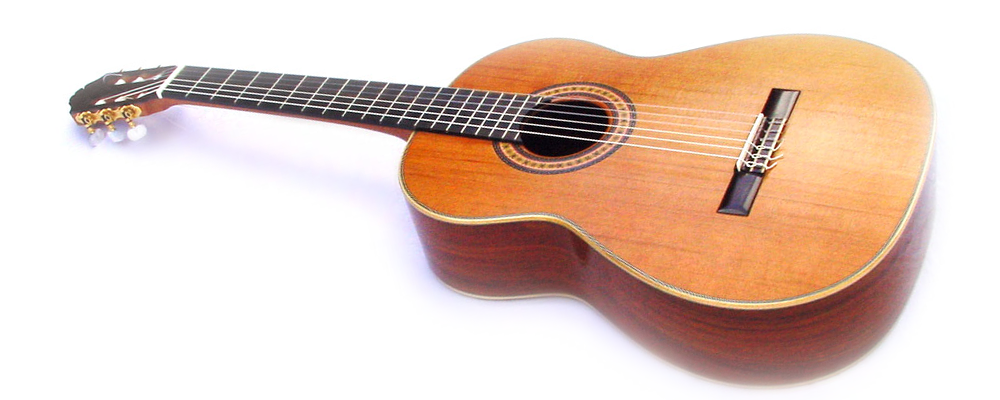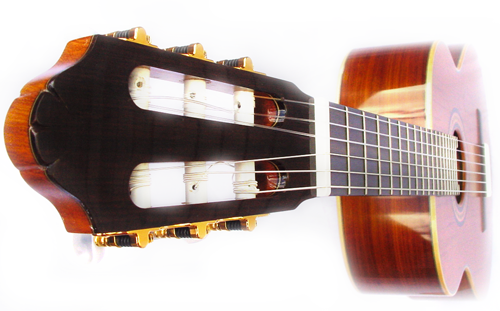
Sound and form born from a unique blend of art, craft and technology.
A Jaques classical guitar combines art, craft and technology in a way that excites the senses.
Look at the form, lines and colour, admire the structure, balance and finish, feel its weight and strength, and above all, listen to the pure sound - from the subtle whisper of a high harmonic to the clear and loud attack of a fortissimo bass note, encompassing sweet bell-like tones across the fingerboard.



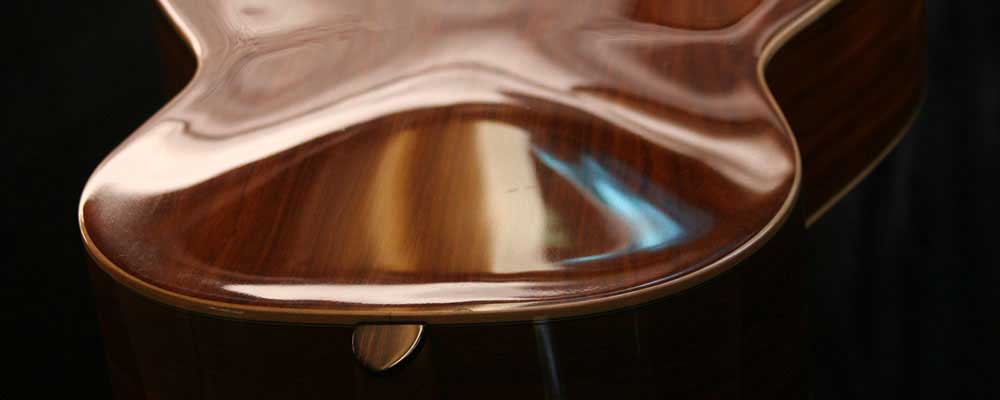

Design Basics
Without going into a lot of detail, there are several different approaches to classical guitar design that each have their advantages in terms of playability, durability, ease of adjustment, maintenance and sound production. To me and probably most other guitar makers, the main objective is to produce a guitar with a 'great' sound. This is a subjective goal, because we all have our own idea of what a great sound is. My own idea of 'great' is a sound that's loud, clean, rounded, and bell-like, with those qualities consistent across all notes on all strings. I also want a guitar that's easy to play, will last for a long time, and is relatively easy to adjust and maintain. To try and achieve these qualities, I use:
- Rigid back and sides with minimal flexibility, so that the sound board becomes mostly responsible for producing the sound;
- A thin soundboard that's strong enough to withstand collapsing due to the force of the strings on the bridge, but also light and 'springy' enough to vibrate in just the right way when excited by the strings
- A bolt-on neck for easy replacement if it's damaged
- A steel truss rod for neck curvature adjustment if required
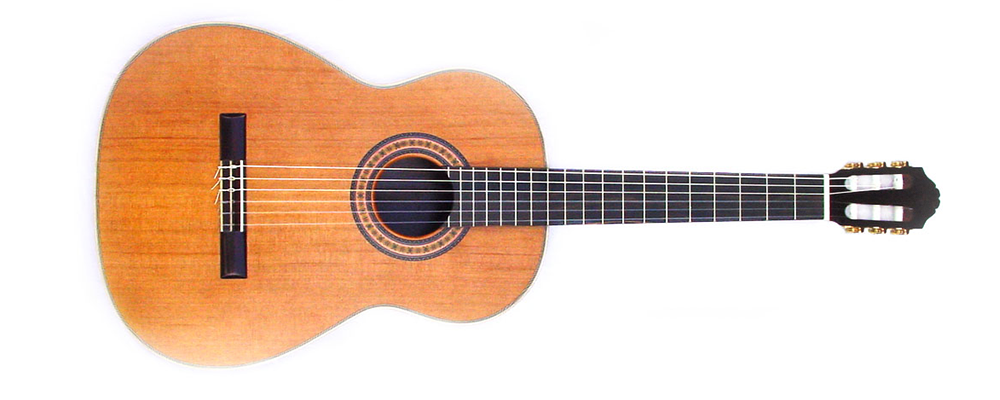
Construction Basics
One of the common questions I get asked is “how do you build a guitar?”… building a good quality guitar is not really all that difficult - probably the most important attribute of a good guitar maker is patience.
Say for example you’re making a tailblock – the small piece of wood that fits inside the body of the guitar at the back. It may be just a rectangular lump of wood to some, but If you’re happy to spend ½ a day or more working the tailblock so that it’s perfectly dimensioned, perfectly finished and is ‘a thing of beauty to behold’ (will I use this finished tailblock for my guitar, or will I mount it in a mahogany cabinet and put it on display?) then you probably have the patience and temperament to be a builder of good guitars.
Most of the tools and techniques I use, I've transferred from my life-long interest in carpentry and fine woodwork. The tools that are unique to guitar making are mostly the JIGS...it seems that for every step in the process, a jig is required. Luckily the vast majority of jigs can be easily made.
The other question I’m commonly asked is “are your guitars hand-built?” This is an interesting question, because it opens up a whole philosophical area of discussion about what constitutes “hand built”… I use my hands to build my guitars in as much as I use them to grip and guide hand tools (chisels, saws, planes etc) but I also use them to press start buttons on machines that help me immeasurably in accurately shaping and dimensioning components of the guitar.
I think what counts is the end result, so all I can say is that I have my own techniques that rely on a combination of hand tools and machinery to produce a result that is personally very pleasing, and satisfies my creative urge.
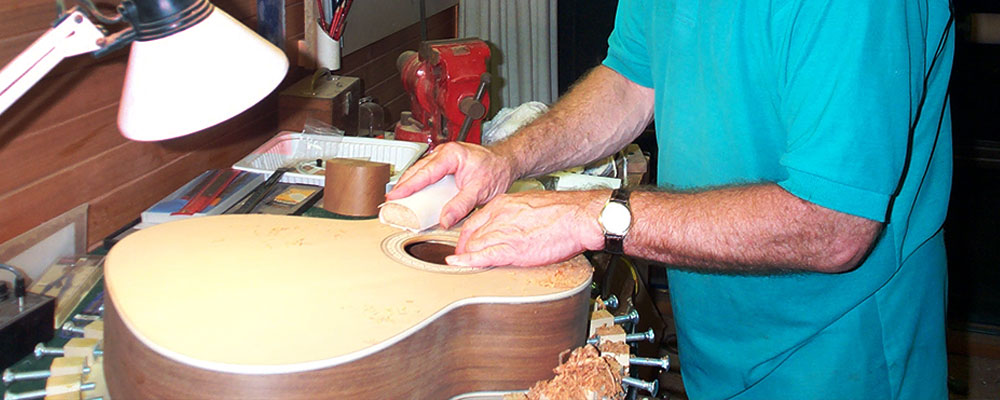
Guitar Body
- Laminated back, made from five layers of wood veneer (for the outer layers, I commonly use Australian hardwoods e.g. flooded gum, red river gum, Tasmanian blackwood, as well as the more traditional woods such as Indian rosewood), pressed into a back mold and glued with epoxy-resin (this makes a very rigid ‘cello shaped’ back that requires no bracing)
- Laminated sides, made from three layers of wood veneer, pressed into a side mold and glued with epoxy-resin (this makes very rigid sides that require no bracing)
- Inner re-enforcing plate, made from 18mm high grade marine plywood. This provides a solid platform for mounting the soundboard on, and also helps to keep the body sides rigid.
Sound-board
- Made from two pieces of edge-joined book-matched western red cedar, thinned down to approx. 1mm in some areas, and re-enforced with wood/carbon fibre bracing (this is where the technology comes in with careful measurement, analysis and experimentation to hopefully produce a ‘great’ sound…)
Neck
- Made in 3 sections from either rosewood or mahogany, including a steel truss rod to provide adjustment of the neck curvature if it’s ever required, Mortice and tenon joint to the body, held in place with steel bolts. This allows relatively easy replacement of the neck without damage to the body if it’s ever needed. (you never know when someone’s going to use their guitar as a cricket bat…)
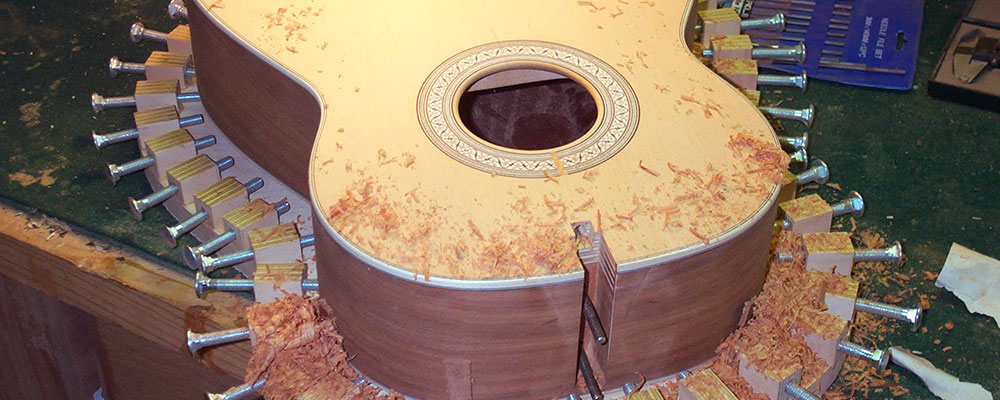
Fingerboard
Made from African Ebony most of the time – sometimes I use rosewood.

Finishing Basics
As I used to say to my daughter when she was three years old – ‘patience is a virtue’…this is so true for the finishing process – it can take me up to 3 months to put the finish onto a guitar and have it to a state where it’s almost flawless. (I’ve come to the conclusion that achieving complete flawlessness is impossible, so as with most things in life, I’ve reached a compromise that seems to satisfy both sides of my persona)
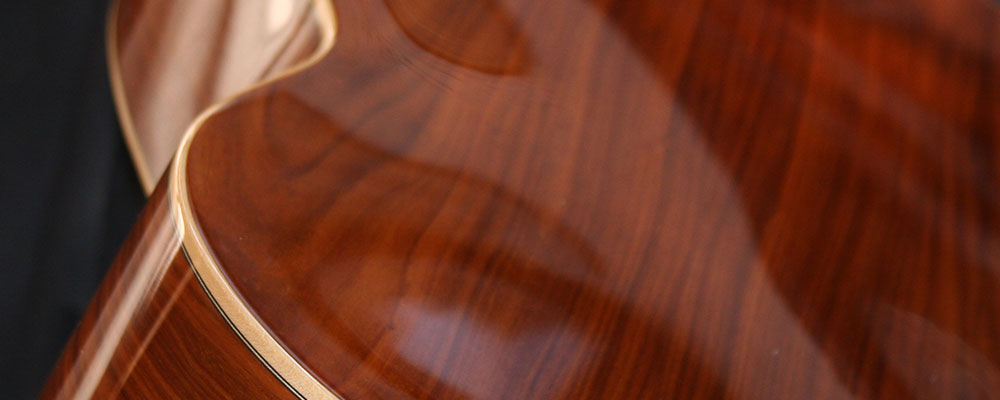
My guitars are finished with:
- Nitro-cellulose lacquer – multiple gloss coats on the back, sides and neck, cut and polished to a very high gloss
- Two very light matt coats of Nitro-cellulose on the soundboard
I also like to finish the inside of the body with golden shellac – this imparts a rich golden glow to the inside, particularly on the lighter coloured Australian hardwoods I sometimes use. It also provides a good seal against moisture and dust getting into the pores of the wood.
The End Result
If you prefer a light weight guitar, don’t buy a Jaques guitar. My guitars are quite heavy, due to the laminated body structure and truss rod. You’ll notice a difference though, immediately you start playing one of my guitars. Unlike a more traditionally constructed instrument, my guitars have a constant loud projection, no matter how tightly or loosely they’re held against your body as you play them.
If you have a traditionally constructed guitar (i.e. one with ‘solid’ wood back and sides that are re-enforced with bracing) you’ve no doubt noticed that if you hold the guitar close and tight, the sound is muted somewhat, and it’s not until you sit the guitar away from your body that you get the full projection of the instrument. Also, try loudly plucking an open string, and then put your left hand on the top of the head of the guitar, and your right hand on the edge of the body behind the bridge. Now pull back gently with both hands, and you may notice that the ringing note on the open string raises its pitch…To me, this is not a good thing because it indicates that the guitar body/neck structure is not stiff enough, and while this may not lead to future catastrophic problems, it does indicate that some of the precious energy you impart to the strings when you’re playing the guitar, is very likely lost in longitudinal oscillations of the body/neck structure. This is energy that could be used to ‘pump’ the soundboard a bit more, hence providing more volume… If you don’t mind these ‘features’ then great – there are plenty of world class guitars that have them…but I find it personally annoying to have to hold a guitar away from my body in order for it to work properly, and the idea that I can flex the guitar and change the pitch, just makes me want to do it (it’s a bit like putting your tongue in a tooth cavity – you know it’s bad, but you just can’t help doing it because it’s there)
… that’s why I make my guitars the way I do…
